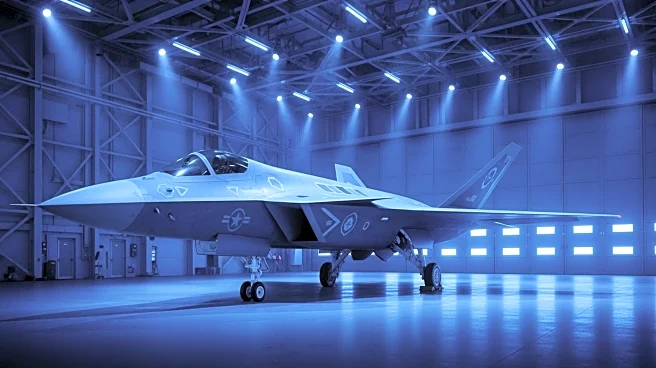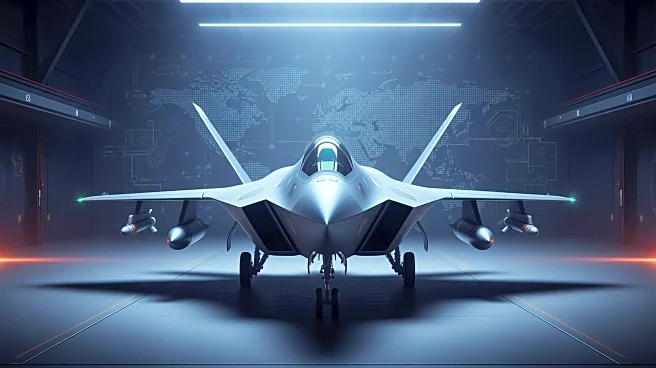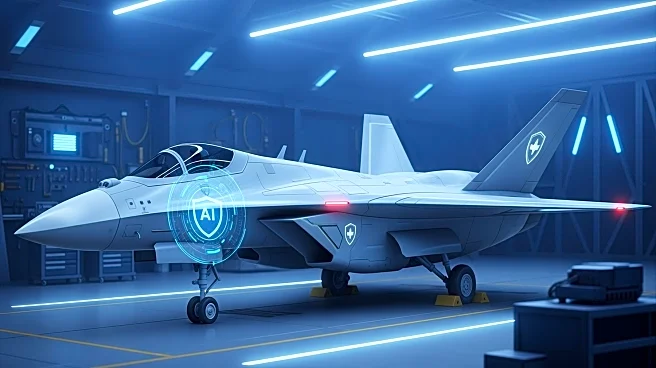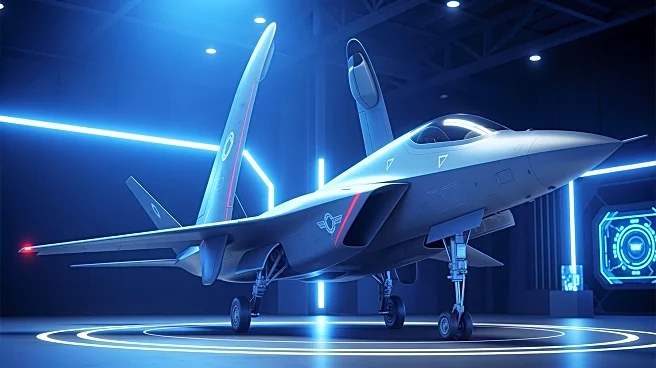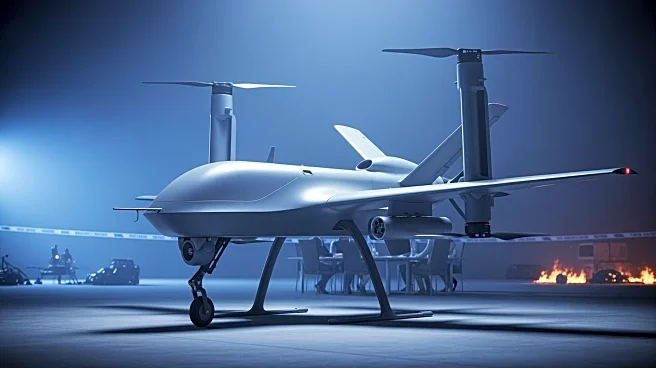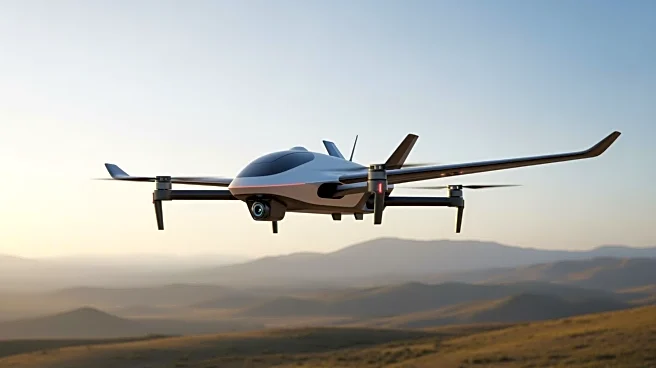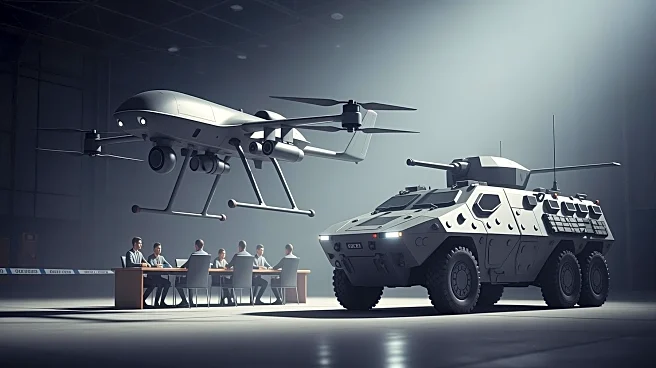What's Happening?
Shield AI has introduced the X-BAT, an AI-piloted, vertical-takeoff-and-landing (VTOL) fighter jet designed to operate in contested environments. The X-BAT can function independently or as a 'loyal wingman'
alongside manned aircraft. It features a stealthy design, a combat radius of over 2,000 nautical miles, and the ability to launch and land without runways. The jet is equipped with Shield AI's Hivemind autonomy software, allowing it to navigate and identify targets autonomously, although human authorization is required for lethal actions. The X-BAT is priced at approximately $27 million, significantly less than traditional manned jets, making it an affordable and expendable option in high-risk combat scenarios.
Why It's Important?
The development of the X-BAT represents a strategic shift in military aviation, addressing the threat posed by China's Anti-Access/Area-Denial (A2/AD) strategy, which targets U.S. airpower on the ground. By eliminating the need for runways, the X-BAT enhances the survivability of U.S. air assets against missile strikes. This innovation aligns with the U.S. military's focus on distributed airpower and could reshape air combat by increasing the use of autonomous systems. The affordability and expendability of the X-BAT allow for more flexible and aggressive deployment strategies, potentially restoring strategic balance in the Indo-Pacific region.
What's Next?
Shield AI plans to conduct the first VTOL flight tests of the X-BAT in 2026, with full demonstrations by 2028 and combat-ready jets by 2029. The U.S. Air Force and Navy are evaluating such 'Collaborative Combat Aircraft' drones, and Shield AI is already supplying its Hivemind AI for these programs. The X-BAT's development could lead to a transformation in air warfare, with the potential deployment of autonomous fighter fleets by the next decade. However, challenges such as jamming, cyberattacks, and cost management remain, and the Pentagon will closely monitor the program's progress.
Beyond the Headlines
The introduction of the X-BAT highlights the increasing integration of AI in military applications, raising ethical and safety concerns about autonomous combat systems. The reliance on AI for navigation and target identification necessitates robust oversight to ensure human control over lethal decisions. The X-BAT's development also reflects broader trends in defense spending and technological innovation, with implications for the defense industry and geopolitical dynamics. As the U.S. and its allies explore collaborative combat aircraft concepts, the X-BAT could play a pivotal role in future military strategies.
